Having mentioned
stand development in a
number of my posts on this blog, I've decided that this technique warrants a post of its own. There is plenty of information on stand development available online, but I thought it worthwhile to give an account of my own experience of using it. In summary, stand development is a method of developing a film using highly dilute developer, minimal agitation and long developing times. It's an old technique, first described in the 19th century, however I have only begun to use it recently.
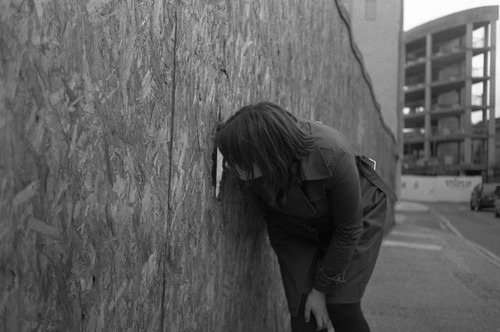 |
| Bear Lane, Southwark, Agfa Optima Sensor with FP4, stand developed in Rodinal 1+100 for one hour. |
My first experiments using stand development was with Ilford FP4 in 35mm. For the very first roll I developed this way, having filled the tank and agitated for the initial minute, the idea of simply leaving it alone for an hour seemed counter-intuitive to the way I'd been developing films for years and required some blind faith that it would actually work. I used Rodinal, the developer I use regularly, but rather than the more usual dilutions of 1+25 or
1+50, the standard procedure for stand developing with Rodinal is to
dilute it 1+100, and then let the film
stand without agitation in the developer for 1 hour. This may
not give the best results for all films, but it's certainly a very good
starting point. The image above is from the first roll of film I developed using this technique, and I was pleasantly surprised by how well the negatives came out.
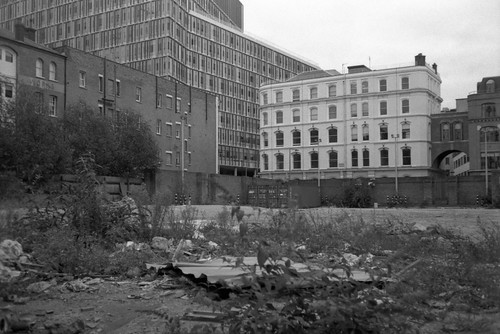 |
| Southwark, Agfa Optima Sensor with FP4, stand developed in Rodinal 1+100 for one hour |
Stand development works by the highlight areas on the film developing to
exhaustion: the developer here is most active, and so exhausts (regular agitation would normally prevent this from happening by keeping the developer moving in the tank); meanwhile in the shadow areas the developer continues to work to
completion. This gives a long tonal scale to the image, and the lack of agitation also appears to benefit the appearance of grain. Additionally, using a highly-dilute developer increases perceived sharpness due to edge effects. The first results I got with stand development appeared to have these all these benefits.
I subsequently used this technique for developing out of date and colour film (such as with
found films) with success, but using it on medium format film showed up some limitations. In the image below, there was a notable increase in the density of the negative towards the bottom of all the frames on the film, with some unevenness too. This may be due to the fact that when I first began using stand development, I mixed the developer at 20ºC; over the course of an hour's development the developer must cool towards ambient temperature, and perhaps, with convection currents, warmer developer rises in the tank and develops here more quickly.
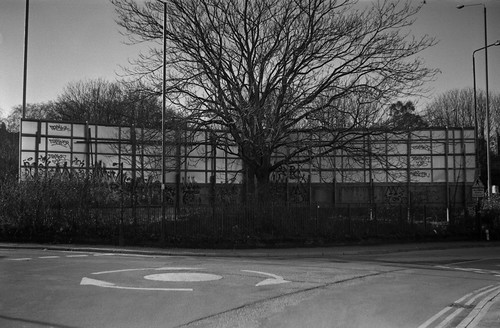 |
| Mini Roundabout, Fomapan 400 (medium format), stand developed in Rodinal 1+100 for one hour |
The two methods of avoiding uneven development are to use the developer at room temperature and to agitate during development (additionally, soaking the film in water before developing may also help). I now invert the tank a couple of times half an hour through the developing time, which technically makes it
semi-stand development. There are more exacting semi-stand agitation regimes, which can mean inverting the tank every five or ten minutes. However, this does remove the joy of just leaving the film alone and getting on with something else while it's in the tank.
 |
| FP4, found in a bulk film loader, stand developed in Rodinal 1+100 for one hour |
Having established a way of using stand development that seems to work with a good degree of consistency, there's a number of situations that I use it for. It's my first consideration for developing any unknown film, such as films found in secondhand cameras, or the film I found in a bulk film loader, with no indication of what was inside, or, as recently happened, I lost the tab on a roll of medium format film (it got caught inside the camera when I unloaded the film, torn from the backing paper the wind then carried it off the bridge I was standing on and into a river below; I could see from the backing paper it was an Ilford film, but I wasn't sure which; it turned out to be
Delta 100). It also works very well with out-of-date film (
and plates): the loss of sensitivity with age is compensated by increasing exposure, and I then stand develop. Lastly, there are films that I simply like the look of in stand development, in particular, Ilford FP4 (
HP5 less so, but I do use stand development when push processing this with Rodinal).
Finally, as I referred to in my post about
Kodak Technical Pan, when using Rodinal at high dilutions, there is a minimum amount of developer per film. Agfa recommended a minimum of 10ml Rodinal per film, no matter the dilution used. At 1+100 this would mean a litre of working solution. In
practice smaller amounts of Rodinal work well enough (although I've had
uneven development when using 5ml); I tend to use 8-9ml of
developer to 800-900ml of water in a 3-reel Paterson tank, and when developing 35mm film, I place an empty spool at the bottom of the tank to raise the film being developed to its middle.
Sources/further reading:
An entry on stand development from Cyclopedia of Photography, Bernard E. Jones (1911)
An Introduction To Stand Development at Daniel Hewes Photography
Efke 25 stand development by Martin Zimelka
Edit 26/11/14
Since writing this post two years ago, I have also been using Ilfotec LC29 for stand development, as well as developing with its recommended dilutions and agitation regime. Although of different composition, Ilfotec LC29 is, like Rodinal/R09 One Shot, a highly concentrated liquid film developer. Standard dilutions for Ilfotec LC29 are 1+9, 1+19, and 1+29; the first two dilutions can be used for a number of films in one developing session, while at 1+29 Ilford state that it should be treated as a one shot developer. For stand development with Ilfotec LC29, I have been using the same dilutions as with Rodinal: diluting it 1+100 for most films with a normal contrast curve, and developing for one hour; for higher contrast emulsions I have been using 1+120, 1+150 or 1+200 with the Kodak High Resolution Aerial Duplicating film. The results using Ilfotec LC29 for stand development are comparable with Rodinal and the negatives exhibit similar qualities.
 |
| Adox Silvermax 100, stand developed in Ilfotec LC29, 1+100 |
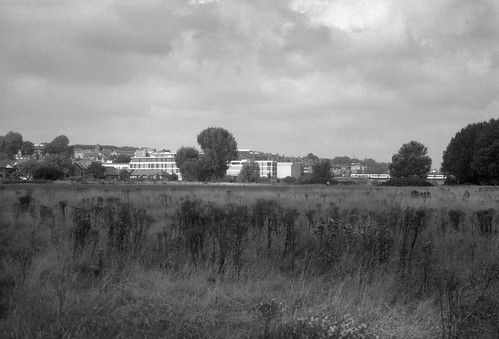 |
| Rollei RPX 100, stand developed in Ilfotec LC29, 1+100 |
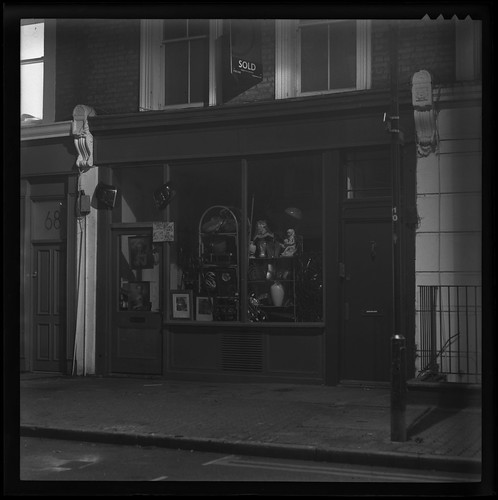 |
| Ilford Special Lantern glass plate, stand developed in Ilfotec LC29, 1+120 |
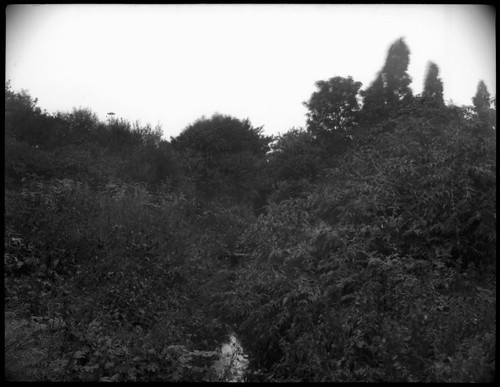 |
Kodak High Resolution Aerial Duplicating film, stand developed
in Ilfotec LC29, 1+200 |








I really enjoyed this post. I tried stand dev myself a couple of weeks ago, with only limited success, but you've inspired me to try again, this time with better control.
ReplyDeleteFor what it's worth, I shot RolleiRetro 120 film, 100ASA rated at 80. I diluted Rodinal 1:100 with distilled water, washed also with distilled water, and fixed with Ilford Rapid Fixer.
Can I ask you what you used to fix, and how long you would recommend presoaking?
I usually presoak for just a couple of minutes, although I've read that many photographers use 5 minutes as a standard. I use Ilford Hypam for fixer, and I don't use acid stop- with the developer diluted 1:100 there isn't the need for it, and use water instead. I have found 120 more difficult than 35mm, and, as mentioned above, I think temperature plays its part in the process.
ReplyDelete